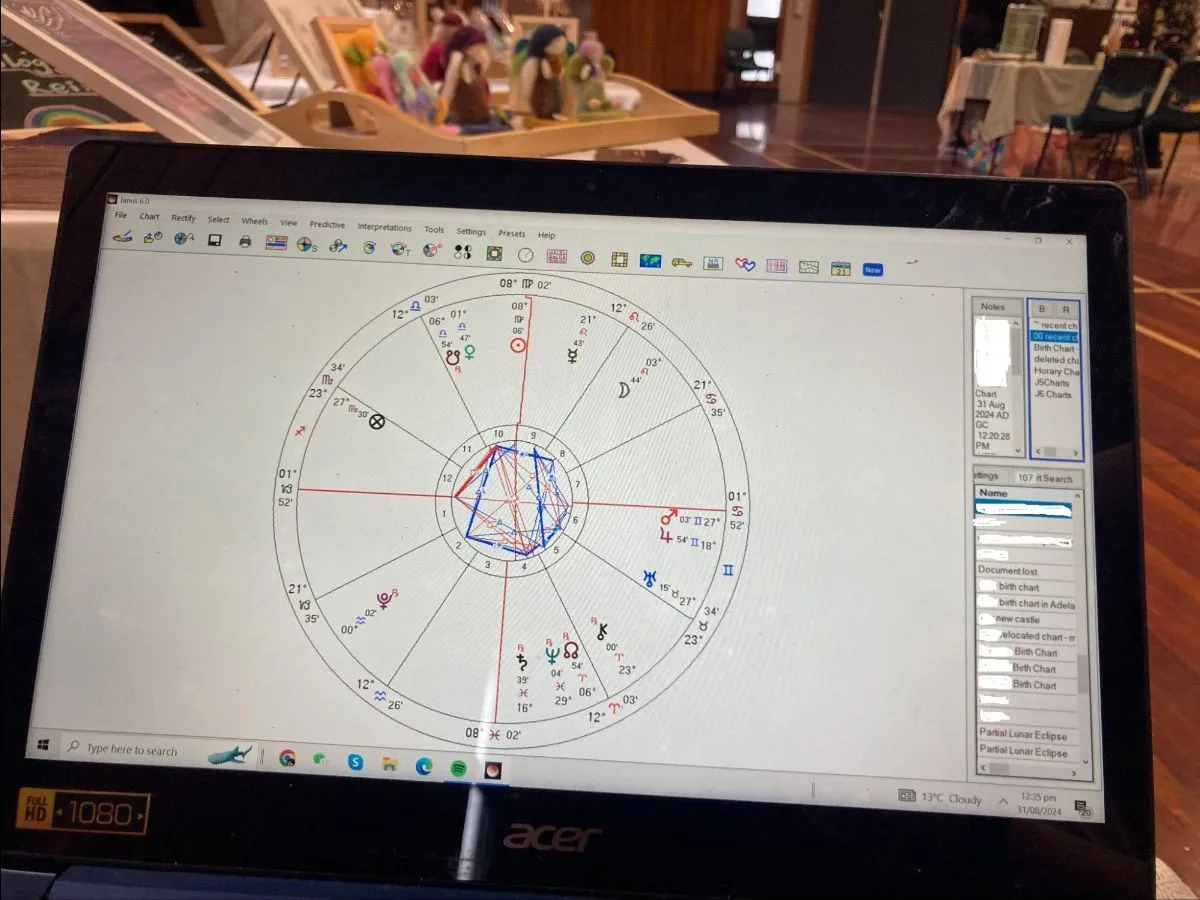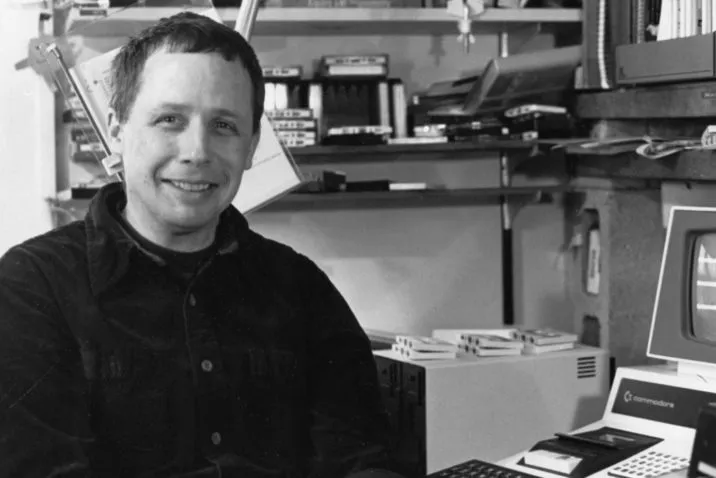The <FAULT> in our stars: Digitising astrology
Bronwyn Rideout - 16th September 2024
Are you desperately seeking a side hustle? Then consider the perennial growth industry of astrology. Projected to reach $22.8 billion by 2031, prognosticators thrive in times of uncertainty. As I wrote back in 2022, their reach has never been wider, with social media platforms providing a new audience with the promise of few or no regulations regarding health claims or disinformation.
Will this generation of up-and-coming horoscope junkies be working harder? Or will they work smarter
The answer? They’ve been working smarter the entire time.
Astrologers were early adopters of home computers, as early as the 1970s, and of programmable calculators before that, delegating the drudgery of astronomical trigonometry to circuit boards. With the time saved from hand calculating and drawing charts, they increased output and, ultimately, their profit, through selling both their homespun software and printed charts. Today, there are multiple apps and desktop programs available to the budding astrologer and to lay-people. Many of them use a software toolbox called Swiss Ephemeris, which is based on planetary and lunar ephemeris from NASA’s Jet Propulsion Laboratory, and covers a time range from 13201 BC to 17191 AD. There is even a standard for storing astrological data in text files, called Astrologisches Austauschformat, that allows for easier exchange between computer systems and software.
Edgar Cayce Association for Research and Enlightenment
I was curious about how accurate it could be and, if the price was right, whether tracking its predictions would make a good article.
What I did find, led me down a different pathway.
The following claim is made:
“The positions of the planets and stars at the time and place of your birth have a tremendous impact on your life. Our Birth Profile gives insights into opportunities and challenges influencing you. We calculate the position of the planets and stars at the moment and location of your birth, then create a horoscope following the guidelines in the Cayce readings and identifying the major aspects and houses of influence in your life. And we compile and print a comprehensive interpretation of it all!”
Included on the website is a sample report that is not courtesy of an individual at the Edgar Cayce Association for Research and Enlightenment (A.R.E.). Rather it is a report produced by a computer program called Astro*Talk, published by Matrix Software. I wasn’t immediately put off by the use of software - that felt somewhat practical. Having been on computers and online since the 1990s, I remember the days of shareware CD-ROMs, including astrological software and the sundry astrology websites that have been around on the early days of the internet. However, I was curious about whether Astro*Talk and Matrix Software were owned by the A.R.E and, if not, whether the software was purchasable. Then, I could compare the reports sent by the A.R.E. with the ones I produce at home.
The answers I received to my two questions were No (as far as I can tell) and Yes.
Yes, the software was available to purchase, but at nearly $200 to download and purchase a license, it’s a steep price to pay for a casual article.
So, I started mulling over a new idea - testing out various (ideally cheaper) astrology programs to see whether there was congruence in their outputs, whether they changed over time, and what mechanisms or formulas were in place that contributed to any variations in the results. Because, you would think that if there was any predictive power in astrology, you could put the same question or data to different programs and receive the same response.
Astrology by laptop at the expo
An opportunity to start trialing this idea arose a couple of weeks ago during the Divine Connections Expo. One of the stall holders offered Horary readings for a standard price of $30. To explain horary astrology badly, it is like a tarot reading in the form of a star chart or a horoscope that is specific to a question. While your question may be a yes/no answer, you receive deeper insights into your current situation and any obstacles to your desired outcome.
I was willing to part ways with a few dollars in the name of science, and to see what would happen. While I won’t reveal my reading until 2025, the generalities of the reading will be of surprise to no one. The stall holder used a program called Janus to pull together a chart, and she was happy for me to take a picture of the screen; no print outs, however, which was disappointing. Despite being told by the astrologer that the seven month timeframe I was looking at was perfect, apparently the computer said that it was too soon to tell what the outcome of my question would be. As if could see the screen the entire time, it was clear that she wasn’t reading out any pre-written statements, but was making her own interpretations. Nevertheless, she weaved a standard hero’s narrative of sorts, where I was currently facing or will face some struggles, obstacles, and a bit of backstabbing on my journey, but would ultimately achieve my goal, albeit maybe a bit later than I would like. She avoided any outright bad news, sure things, or firm dates for when things would fall into place.

Janus and Astrology House
The software the astrologer used, Janus, is a popular program which happens to be published in New Zealand by the company Astrology House. The company itself is run and operated by the same individuals who run the Astrology Foundation Incorporated and the now defunct New Zealand College of Astrology. The company has provided astrology services since 1980, and has sold the Janus software since 1998. The group is strongly influenced by Reinhold Ebertin and his school of Cosmobiology, which is the theory that cosmic energies influence biological processes on earth. However, Ebertin wrote books, not programs, and I remain curious about whether there is a set of algorithms or charts that all astrology programs had in common.
So, I gave that problem to Mark to uncover while I took a deep dive into the history of astrology software, which has surprisingly been around as long as the personal computer.
Michael Erlewine: The father of astrology software
A majority of readers probably don’t know who Michael Erlewine is, but you might be familiar with his work, as he created the once-popular All Music Guide and All Movie Guide books and websites. Erlewine’s connection to the music industry predates the internet, and feels apocryphal - when he was 21 he hitched hiked to California with Bob Dylan, and was also in a band called the Prime Movers; the band is now best known for having given Iggy Pop the “Iggy” moniker, due to playing in a band called The Iguanas.
Through the 1970s, Erlewine graduated to 4 function calculators, and then programmable calculators, before finally purchasing a Commodore PET in 1977, the year it was released. Soon, Erlewine was creating his first astrological software, which he initially gave away for free before he started charging for it under the name Matrix Software (Named for the greek word for womb, nothing computer related at all). This is notable because 1) copies were made with cassette tapes, rather than floppy disks and 2) many astrologers were freaked out that the advent of the computer would herald the loss of their livelihoods. Convenience won out because, according to Erlewine, printing out a birth chart and mailing it out actually earned some Astrologers a few extra dollars from customers who would not otherwise pay or sit down for a full reading.

Erlewine also claims that amongst his earliest customers were amateur astronomers, because they didn’t have the software available that could do the calculations that Erlewine’s could do. And there is likely something to that claim because, for what it’s worth, Erlewine wasn’t just creating software that spouted out barnum statements. Using the American Ephemeris and Nautical Almanac, Erlewine created and published a 400-year (1653-2050) ephemeris, or celestial table, in 1975. Then, in 1976, with the help of a friend and a mainframe computer, he calculated the heliocentric relationship of all of the orbital planes, translating astronomy language into astrology language while also introducing astrologers to black holes, etc.
This is to say that it appears that Erlewine’s astrology software, of which AstroTalk is one of the products he sells, is as grounded in reality and science as a pseudoscientific practice can be. There is no reference to Edgar Cayce in any of Erlewine’s biographies, but without access to AstroTalk or an astrologer who uses that software, I’m unable to make a conclusion as to whether the A.R.E.’s claims about the provenance of their reports is true.
While Erlewine has been in the game the longest, he didn’t have to wait long for competition - fellow astrologer Robert Hand founded Astrolabe in 1979. Like Matrix, Astrolabe is still in operation, and in 1993 they acquired the popular SolarFire astrological software from an Australian company. The first open source astrology software, Astrolog, was published in 1991. It initially used Erlewine’s calculations, and is a popular back end for websites to use to generate charts. Again, the formulas are based in reality, but any interpretation provided is wholly subjective and a creation of the individuals selling or distributing the final product.
Final Thoughts
Why is talking about astrology software so important? Aren’t we beating a pseudoscientific dead horse?
I say neigh.
I think about the stall holder I paid for my reading that Saturday. The story they weave on their website is, if true, quite sad. Since 2018 they have paid multiple esoteric and new age groups for various qualifications throughout their journey of self-healing, and are now misdirecting people under their own shingle. Whenever our messages about psychics, mediums, astrologers, and other soothsayers start to feel repetitive, skeptics should remind themselves that for someone, somewhere, it may be the first time they ever hear a critique. With more people using online apps and ordering charts without ever speaking to an astrologer, being able to dissect these programs and discern whether barnum statements are hardcoded or AI-derived will become an important part of our activism toolbox.
